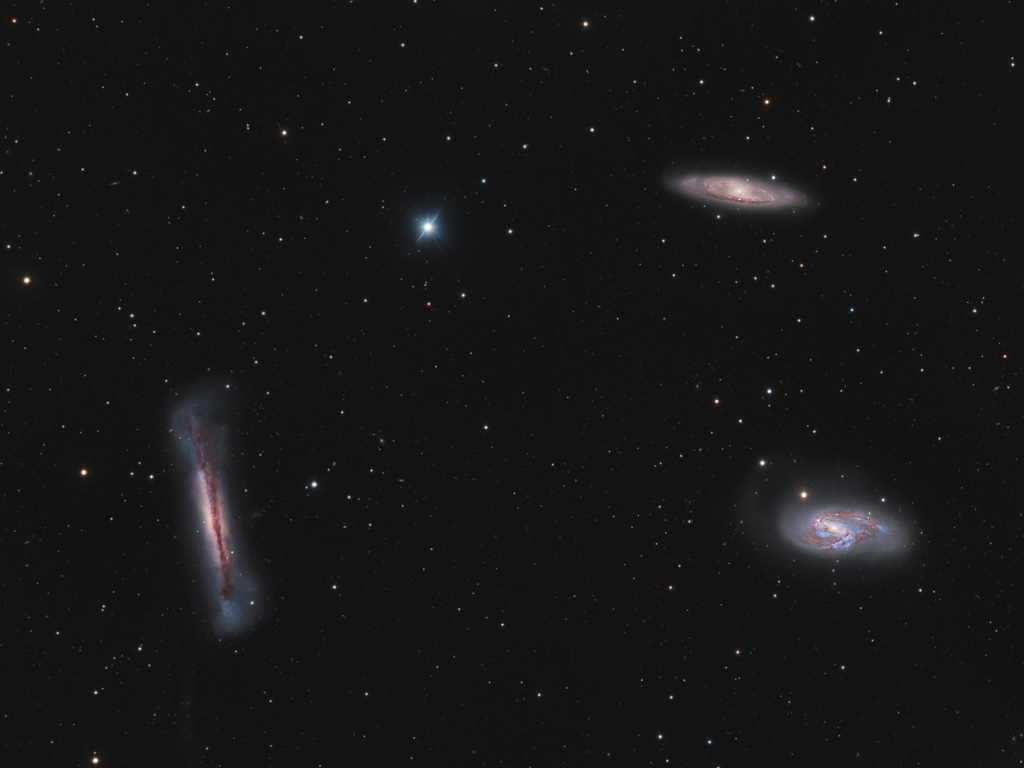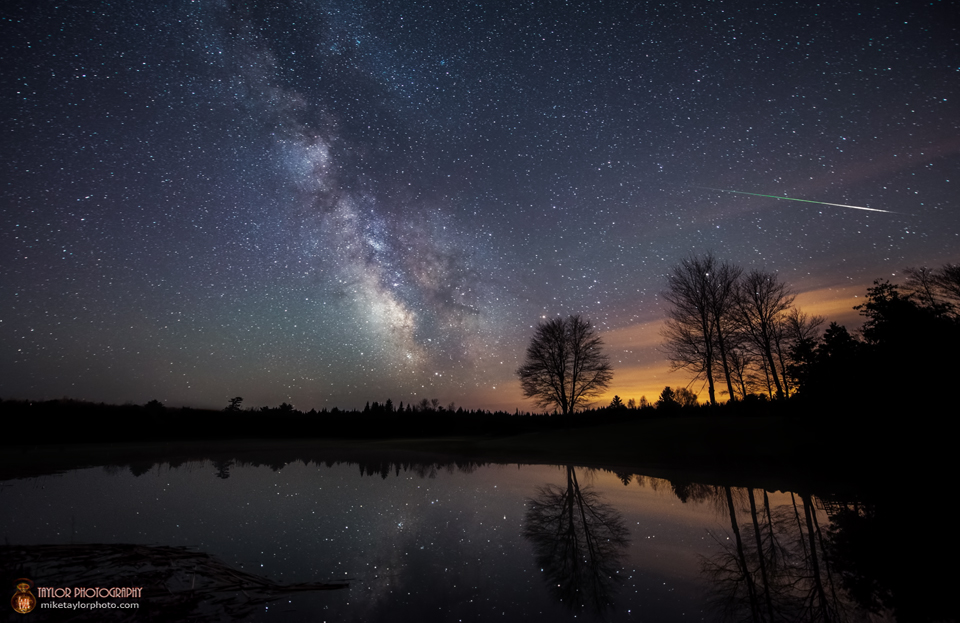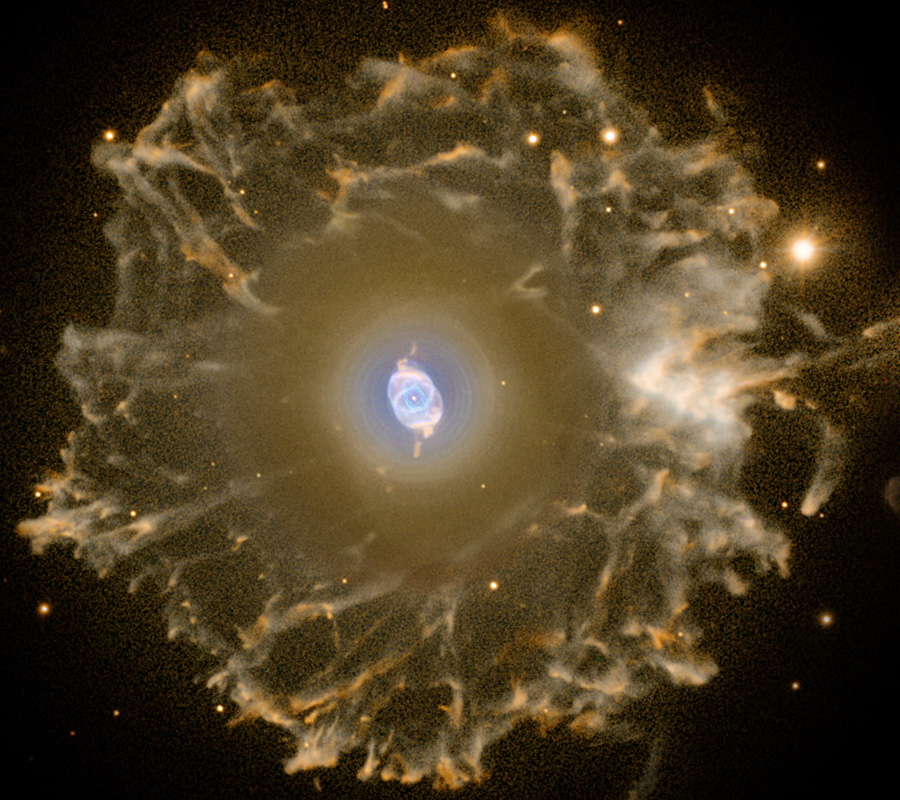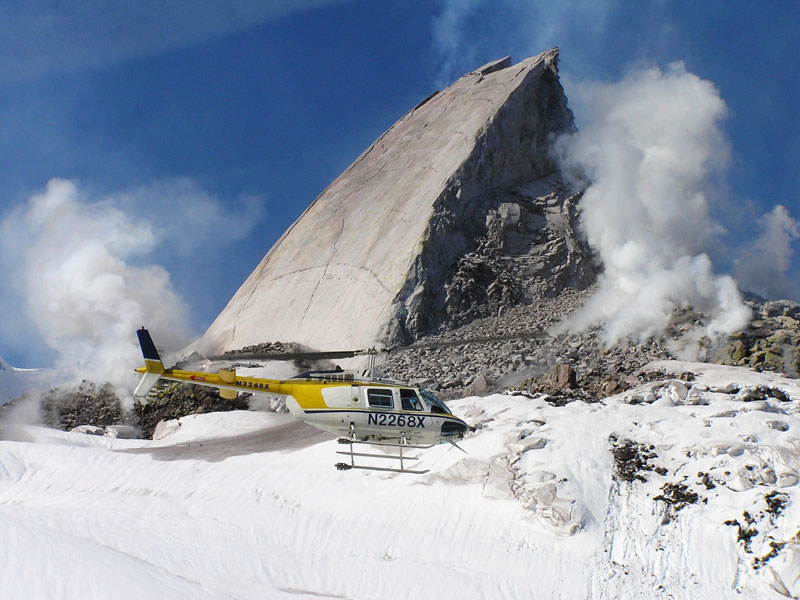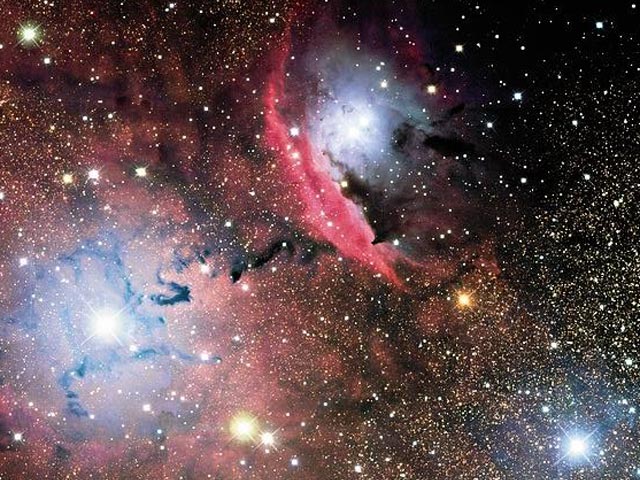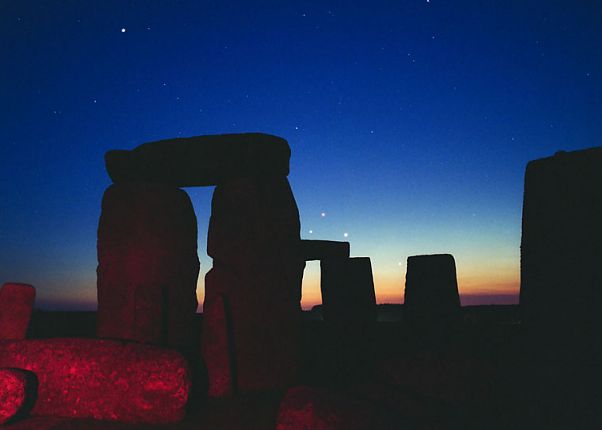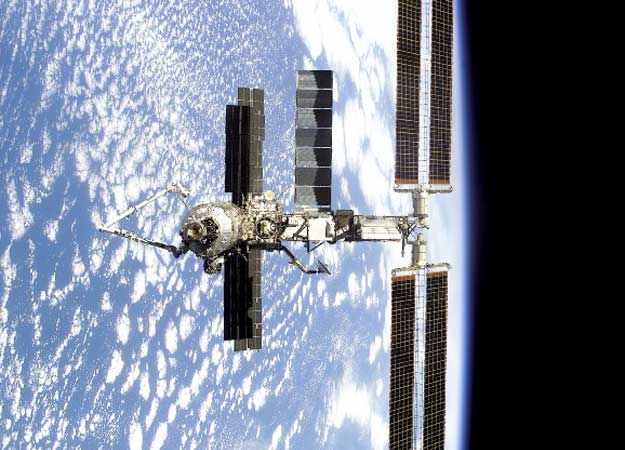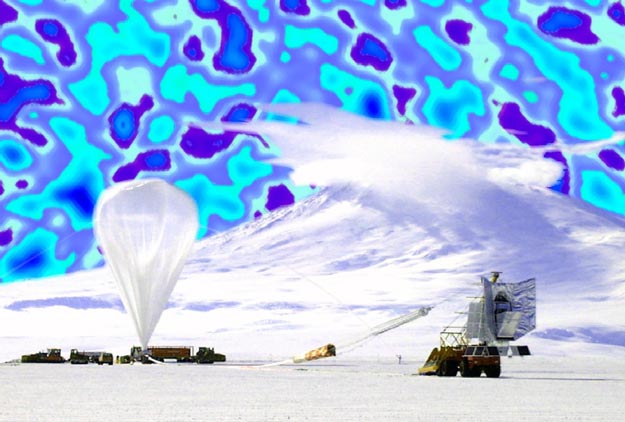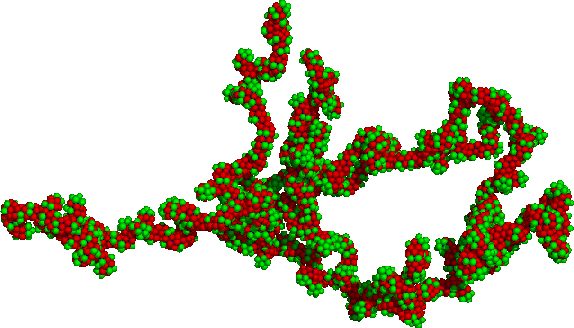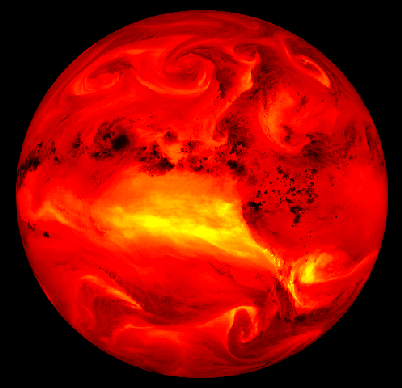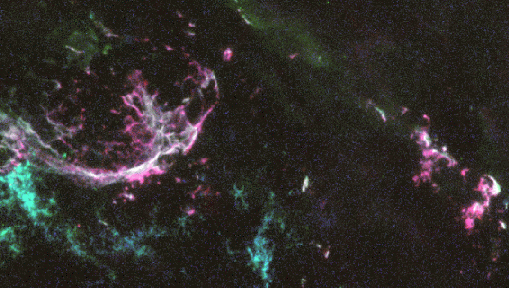| << Previous | Index | Next >> |
2015 This popular group is famous as the Leo Triplet - a gathering of three magnificent galaxies in one field of view. Crowd pleasers when imaged with even modest telescopes, they can be introduced individually as NGC 3628 (left), M66 (bottom right), and M65 (top). All three are large spiral galaxies but they tend to look dissimilar because their galactic disks are tilted at different angles to our line of sight. NGC 3628 is seen edge-on, with obscuring dust lanes cutting across the plane of the galaxy, while the disks of M66 and M65 are both inclined enough to show off their spiral structure. Gravitational interactions between galaxies in the group have also left telltale signs, including the warped and inflated disk of NGC 3628 and the drawn out spiral arms of M66. This gorgeous view of the region spans about one degree (two full moons) on the sky. The field covers over 500 thousand light-years at the trio's estimated distance of 30 million light-years.
2014 The early morning hours of May 6 were moonless when grains of cosmic dust streaked through dark skies. Swept up as planet Earth plows through dusty debris streams left behind periodic Comet Halley, the annual meteor shower is known as the Eta Aquarids. This inspired exposure captures a meteor streak moving left to right through the frame. Its trail points back across the arc of the Milky Way to the shower's radiant above the local horizon in the constellation Aquarius. Known for speed Eta Aquarid meteors move fast, entering the atmosphere at about 66 kilometers per second. Still waters of the small pond near Albion, Maine, USA reflect the starry scene and the orange glow of nearby artificial lights scattered by a low cloud bank. Of course, northern hemisphere skygazers are expecting a new meteor shower on May 24, the Camelopardalids, caused by dust from periodic comet 209P/LINEAR.
2013 As the New Moon continues this season's celestial shadow play, an annular solar eclipse track begins in western Australia at 22:30 UT on May 9 -- near sunrise on May 10 local time. Because the eclipse occurs within a few days of lunar apogee, the Moon's silhouette does not quite cover the Sun during mid-eclipse, momentarily creating a spectacular ring of fire. While a larger region witnesses a partial eclipse, the annular mid-eclipse phase is visible along a shadow track only about 200 kilometers wide but 13,000 kilometers long, extending across the central Pacific. For given locations along it, the ring of fire lasts from 4 to 6 minutes. Near the horizon, the appearance of the May 9/10 annular eclipse (online viewing) is suggested by this dramatic composite from May of 2012. The timelapse sequence depicts an annular eclipse in progress before sunset over Monument Valley in the southwestern United States.
2012 What's that in the background? Two famous New York City icons stand tall in the above photo taken last week. On the left looms the Statue of Liberty, a universal symbol of freedom, while on the right rises the Empire State Building, now the second largest building in the city. What's unique about this once-in-a-lifetime photograph, though, is the third icon that appears to Lady Liberty's left. High in the air and far in the background flies the space shuttle Enterprise -- perched atop a 747 jet -- on the way to its new home. New Yorkers and visitors to the Big Apple can visit the test space shuttle at the Intrepid Sea, Air & Space Museum on the West Side of Manhattan starting July 19.
2011 What's that bright orange dot above the large telescope on the right? Even seasoned sky enthusiasts might ponder the origin of the orange orb seen by scrolling across this panoramic image, taken last December. Perhaps identifying known objects will help. To start, on the far left is a diagonal band of light known as zodiacal light, sunlight reflected off of dust orbiting in the inner Solar System. The bright white spot on the left, just above the horizon, is Venus, which also glows by reflected sunlight. Rising diagonally from the ground to the right of Venus is the band of our Milky Way Galaxy. In the image, the band, which usually stretches dramatically overhead, appears to arch above the elevated Chilean landscape. Under the Milky Way arch, toward the left, lie both the Large and Small Magellanic Cloud galaxies, while toward the right lies the constellation of Orion surrounded by the red ring of Barnard's Loop. On the ground, each of the four Very Large Telescopes is busy keeping an eye on the distant universe. The orange spot -- it's the Moon. The image was taken during a total lunar eclipse when the normally bright full moon turned into a faint orb tinted orange by the intervening Earth's atmosphere.
2010 The Cat's Eye Nebula (NGC 6543) is one of the best known planetary nebulae in the sky. Its haunting symmetries are seen in the very central region of this stunning false-color picture, processed to reveal the enormous but extremely faint halo of gaseous material, over three light-years across, which surrounds the brighter, familiar planetary nebula. Made with data from the Nordic Optical Telescope in the Canary Islands, the composite picture shows extended emission from the nebula. Planetary nebulae have long been appreciated as a final phase in the life of a sun-like star. Only much more recently however, have some planetaries been found to have halos like this one, likely formed of material shrugged off during earlier active episodes in the star's evolution. While the planetary nebula phase is thought to last for around 10,000 years, astronomers estimate the age of the outer filamentary portions of this halo to be 50,000 to 90,000 years.
2009 This panoramic image tracing constellations in the southern sky shows off a beautiful vista toward the center of our Milky Way Galaxy. It was recorded just last month near the city of Campos in northeastern Rio de Janeiro state, Brazil. A sugar cane field from one of the historic region's local farms lies in the foreground. From left to right, the view sweeps across the Galactic Center in Sagittarius, bright stars in the tail of Scorpius, the South Celestial Pole above and right of the gap in the sugar canes, the dark Coalsack Nebula, and the Southern Cross. The closest star system, Alpha Centauri, and the giant Omega Centauri globular star cluster also shine in the starry night.
2008 On Tuesday, May 6, while standing on planet Earth and sweeping your binoculars along the western horizon just after sunset, you might have encountered this arresting skyscape. The view features a slender crescent Moon and bright planet Mercury separated on the sky by only about 2 degrees. Cradled in the sunlit lunar crescent, the night side of the Moon is faintly illuminated by earthshine -- sunlight reflected from planet Earth. Of course, the clouds in silhouette and fading twilight colors are common elements in pictures of the sky after sunset, but much less often seen is inner planet Mercury, usually hiding close to the Sun in Earth's sky. Still, the coming week will be a good time to spot Mercury near the western horizon about 30 minutes after sunset. As for the Moon, tonight and tomorrow night the crescent Moon will wander close to Mars in the early evening sky.
2007 Strange shapes and textures can be found in the neighborhood of the Cone Nebula. These patterns result from the tumultuous unrest that accompanies the formation of the open cluster of stars known as NGC 2264, the Snowflake cluster. To better understand this process, a detailed image of this region was taken in two colors of infrared light by the orbiting Spitzer Space Telescope. Bright stars from the Snowflake cluster dot the field. These stars soon heat up and destroy the gas and dust mountains in which they formed. One such dust mountain is the famous Cone Nebula, visible in the above image on the left, pointing toward a bright star near the center of the field. The entire NGC 2264 region is located about 2,500 light years away toward the constellation of the Unicorn (Monoceros).
2006 A new rock slab is growing at more than one meter a day on the Mt. St. Helens volcano in Washington, USA. The rock slab, growing since last November, now extends about 100 meters out from one of the volcano's craters. A recently made time lapse movie shows the rock slab growing. Pictured above, a helicopter examines the steaming hot rock slab late last month. Mt. St. Helens underwent a spectacular eruption in 1980 but has been undergoing a comparatively serene eruption since 2004 September. A new volcanic dome has been building which is now about 100 meters above the 1980s dome. The rock slab is visible from the Johnston Ridge Observatory on the erupting volcano.
2005 When stars form, pandemonium reigns. A textbook case is the star forming region NGC 6559. Visible above are red glowing emission nebulas of hydrogen, blue reflection nebulas of dust, dark absorption nebulas of dust, and the stars that formed from them. The first massive stars formed from the dense gas will emit energetic light and winds that erode, fragment, and sculpt their birthplace. And then they explode. The resulting morass can be as beautiful as it is complex. After tens of millions of years, the dust boils away, the gas gets swept away, and all that is left is a naked open cluster of stars.
2004 Why is the sky near Antares and Rho Ophiuchi so colorful? The colors result from a mixture of objects and processes. Fine dust illuminated from the front by starlight produces blue reflection nebulae. Gaseous clouds whose atoms are excited by ultraviolet starlight produce reddish emission nebulae. Backlit dust clouds block starlight and so appear dark. Antares, a red supergiant and one of the brighter stars in the night sky, lights up the yellow-red clouds on the upper left. Rho Ophiuchi lies at the center of the blue nebula on the right. The distant globular cluster M4 is visible just below Antares, and to the left of the red cloud engulfing Sigma Scorpii. These star clouds are even more colorful than humans can see, emitting light across the electromagnetic spectrum.
2003 A stunning telescopic image of the International Space Station crossing in front of an eight day old Moon, this picture was captured on April 11th. But while Wednesday's leisurely transit of Mercury across the Sun entertained observers all over the dayside of planet Earth, the audience for this lunar transit was more restricted. Like other satellites in low Earth orbit, the space station moves quickly through the sky. Glinting in the sunlight near sunset and sunrise, its path strongly depends on the observer's longitude and latitude. So, well-placed astronomer Tom Laskowski tracked the orbiting space station from a site near South Bend, Indiana, USA and recorded a digital movie of the fleeting, dramatic event. This single frame from the movie has been enhanced to bring out detail in the space station. Seen below the lunar terminator at the lower left, the International Space Station appears here at a distance of just over 400 kilometers, with the Moon nearly 400,000 kilometers away.
2002 Stonehenge, four thousand year old monument to the Sun, provides an appropriate setting for this delightful snapshot of the Sun's children gathering in planet Earth's sky. While the massive stone structure dates from around 2000 B.C., this arrangement of the visible planets was recorded only a few days ago on the evening of May 4th, 2002 A.D. Bright Jupiter stands highest above the horizon at the upper left. A remarkable, almost equilateral triangle formed by Saturn (left), Mars (top), and Venus (right) is placed just above the stones near picture center. Fighting the glow of the setting sun, Mercury can be spotted closest to the horizon, below and right of the planetary triad. Still easy to enjoy for casual sky gazers, this photogenic and slowly shifting planetary grouping will be joined by a young crescent Moon beginning Monday, May 13.
2001 The International Space Station (ISS) continues to grow. Last month, the crew of the Space Shuttle Endeavor delivered new Logistics Modules and installed the new Canadarm2 on the growing outpost. The ISS -- complete with its new arm -- was photographed 400 kilometers above planet Earth by the Space Shuttle Endeavor crew soon after they undocked. The shuttle then flew around the station for a survey. Three members of the Expedition Two Crew remain aboard the ISS running scientific experiments and unpacking over two tons of material delivered by the shuttle. The next shuttle scheduled to visit the ISS will be Atlantis in June.
2000 A race is underway to understand our universe through background radiation produced during its infancy. Observationally, increasingly accurate balloon experiments are pressing to beat future space-faring satellites to definitive measurements of universe-determining spot characteristics of the cosmic microwave background (CMB) radiation. The BOOMERANG balloon mission, depicted above, reported its new results only two weeks ago, and the MAXIMA group is reporting new results even today. Cosmology theorists are submitting a flurry of papers in an effort to explain the latest results. These balloon CMB measurements appear to imply a universe consistent geometrically with familiar Euclidean axioms, but perhaps complex in unforeseen ways. Later this year NASA plans to launch the MAP satellite that will study the CMB in greater detail and may determine the geometry of composition of our universe definitively. So stay tuned -- one of the greatest races of modern science is sure to continue.
1999 Our universe is a very dusty place. Dust usually shows its presence by blocking out light emitted from stars or nebulae behind it, sometimes creating the illusion of a horse's head or a sombrero hat. But nobody really knows what a typical interstellar dust grain looks like. By studying how dust absorbs, emits, and reflects light, astronomers do know that interstellar dust is much different than the cell and lint based dust found around a typical house. Interstellar dust grains are composed mostly of carbon, silicon, and oxygen and are usually less than about 1/1000 of a millimeter across. Recent work indicates that most dust grains are not spherical. The above picture shows the result of a fractal adhesion model for dust grains involving random conglomerates of spherical compounds of different properties, here artificially highlighted by different colors.
1998 What alien planet's bizarre landscape lurks below these fiery-looking clouds? It's only Planet Earth, of course ... as seen on the Water Vapor Channel. Hourly, images like this one (an infrared image shown in false color) are brought to you by the orbiting Geostationary Operational Environmental Satellites' (GOES) multi-channel imagers. These instruments can produce images at the infrared wavelength of 6.7 microns or about 10 times the wavelength of visible light, recording radiation emitted by water vapor in the upper troposphere. Bright regions correspond to high concentrations of water vapor while dark spots are relatively dry areas. Atmospheric water vapor is invisible to the eye and produced by evaporation from the oceans. Convected upward in the tropical zones it affects the climate by contributing substantially to the greenhouse effect.
1997 Is it art? In November of 1969, Apollo 12 astronaut-photographer Charles "Pete" Conrad recorded this masterpiece while documenting colleague Alan Bean's lunar soil collection activities on the Oceanus Procellarum. The image is dramatic and stark. Bean is faceless - the harsh environment of the Moon's Ocean of Storms is echoed in his helmet's perfectly composed reflection of Conrad and the lunar horizon. Works of photojournalists orginally intent on recording the human condition on planet Earth, such as Lewis W. Hine and Margaret Bourke-White are widely regarded as photographic art. Similarly many documentary astronomy and space images can be appreciated for their artistic and esthetic appeal.
1996 Massive stars cook elements in their cores through nuclear fusion. Starting with the light elements of hydrogen and helium, their central temperatures and pressures produce progressively heavier elements, carbon, oxygen, nitrogen, etc. up through iron. At the end of their lives they explode in a spectacular supernova, scattering these elements into space, contributing material to the formation of other stars and star systems. In fact, the elements making up life on Earth were baked in such a stellar oven! This Hubble Space Telescope image of a supernova remnant known as N132D in the Large Magellanic Cloud (LMC) allows astronomers to explore the details of this nuclear processing and mixing. It reveals luminous clouds of cooked supernova debris energized by shocks -- singly ionized sulfur appears red, doubly ionized oxygen, green, and singly ionized oxygen, blue. The region shown above is about 50 lightyears across.
| << Previous | Index | Next >> |
